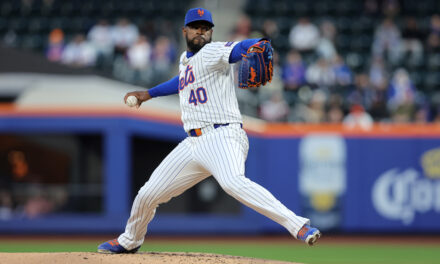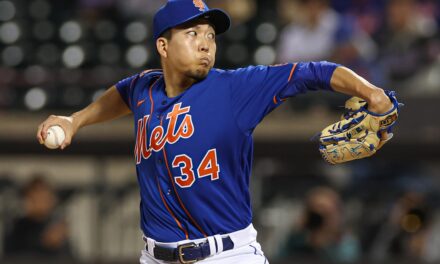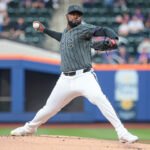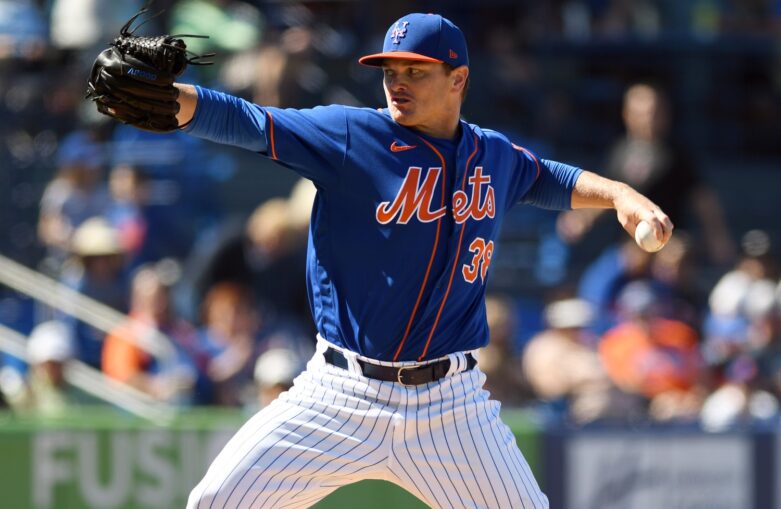
While the 2020 off-season has gotten off to a rather slow kick, the Mets have been busier than most so far. Re-acquiring starting pitcher Marcus Stroman, signing relief pitcher Trevor May, and more recently, the acquisition of catcher James McCann, as well as the hiring of Jared Porter as their new GM.
The table is being set, and now is a good time for optimism if you are a Mets fan. Nevertheless, as some vacancies are filled, more pressing needs become more visible. Right now, those appear to be a solid center fielder, starting pitching, as well as some relief pitching.
We’re going to touch on a matter not often addressed, since there has been plenty of coverage on the Springer’s and Bauer’s of the world, and touch on relief pitching. Specifically, left-handed relief pitching.
While everyone is rightfully excited by the thought of what moves are made possible by Steve Cohen’s acquisition of the team, I would like to look at this through the realistic parameters of payroll. Yes, we should expect the Mets to spend more than they have in recent time, but we should also consider that we don’t know how the current state of the world may have an impact on revenue in 2020.
With many teams reporting great loses in 2019, this is something every fan should consider will impact the market this offseason. One should also keep in mind that Cohen will likely stay somewhere around the luxury tax line.
Our own accounting guru, Christopher Soto, noted via twitter that after calculating the Mets latest expenses in both McCann, as well as the re-acquisition of reliever Jerry Blevins, that they have about $53.5 million dollars before reaching the luxury tax line.
Now, assuming that the Mets do spend on both a solid center field and starting pitcher option, it likely will not leave the Mets with much wiggle room. For reference, MLBTradeRumors has Bauer earning $32 million of average annual value and $25 million for George Springer. Meanwhile, Fangraphs‘ Craig Edwards has Bauer at $22.5 AAV and Springer at $23 AAV.
While I don’t want to assume that the Mets are getting both, or even one, of these two options, I will work under the idea that they acquire players under similar monetary confines. Given that assumption, it could leave the Mets (optimistically speaking) roughly $10 million dollars to work with to supplement other needs, and bench roles. Additionally, given these parameters, I will assume that it will leave top lefty reliever Brad Hand just out of reach for this exercise, given that MLBTR and Fangraphs have him earning $7 million and $10 million AAV respectively.
Before the return of Jerry Blevins, the Mets had recently non-tendered Chasen Shreve, leaving Daniel Zamora as the only viable lefty option in the Mets roster. Given that Blevins’ signed a minor league deal, Zamora is still the only lefty reliever on the Mets 40-man roster.
While Steven Matz did have 3 relief appearances in 2020, his overall performance in both roles left much to be desired (10.17/7.63 ERA/FIP as a starter; 7.20/8.39 ERA/FIP as a reliever). Without exploring all the possible outcomes for Matz in 2020, lets break away from the lengthy exposition and observe some of the options on the left-handed reliever market.
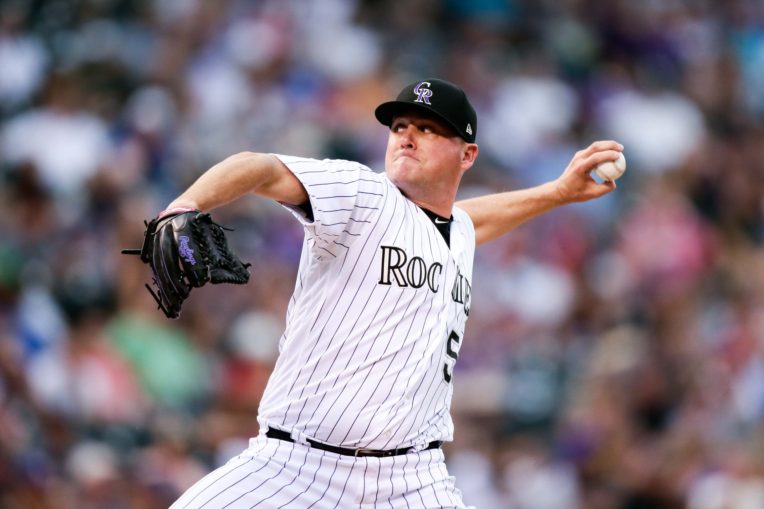
Jake McGee
McGee didn’t have the best showing in Colorado after being in a trade that saw him and German Marquez head to the Rockies, and Corey Dickerson to Tampa. McGee saw increases in the places a reliever would not want to. In parts of six years with Tampa, McGee held a 2.77/2.58 ERA/FIP, 1.017 WHIP, 0.7 HR/9 11.1 K/9.
With the Rockies, he saw these numbers bump up quite a bit with a 4.78/4.65 ERA/FIP, 1.370 WHIP, 1.6 HR/9, 8.2 K/9. This wasn’t the same pitcher. So, why is this a target the Mets should go for?
After being placed on waivers by the Rockies back in July, he was picked up the Los Angeles Dodgers and had more than just a slight turnaround. McGee held a 2.66/1.67 ERA/FIP, .0836 WHIP, 0.9 HR/9, 14.6 K/9.
Of all pitchers in 2020 with at least 10 innings pitched, McGee held the 7th-highest strikeout percentage at 41.77%. That rate being the highest among all free agent relievers topping Trevor Rosenthal (8th at 41.75%), top free agent reliever Liam Hendriks (11th at 40.2%), and new Met Trevor May (14th at 39.6%).
Where did the resurgence of McGee come from?
One of the immediate thoughts is getting out of the Coors Field environment, which we all know lends itself to hitters more than it does pitchers. But that’s not all that happened. McGee’s fastball jumped over a mile and half in speed from 93.4 MPH in 2019 to 95.0 in 2020. That would be his his highest fastball velocity since 2017 (95.3 MPH) which was his most successful year in Colorado (1.5 fWAR).
His fastball became an elite pitch holding hitters to a .194 batting average (BA) and a .240 weighted on base average (wOBA). These being dramatic drops to when hitters crushed McGee’s fastball for a .321 BA and a .414 wOBA in 2019, as well a .297 BA, .387 wOBA in 2018. McGee was able to raise the whiff rate on that same fastball from 20.2% in 2019 and 15.9% in 2018 to 34.2% in 2020.
While it is fair to remember that 2020 is a small sample size in the grand scheme of things, some of these rates are undeniably a different look at what should be a better pitcher.
Despite the better showing in 2020, McGee was not listed on either MLB Trade Rumors or Fangraphs top 50 free agents lists. Given the contracts being given to relievers currently, McGee should command less than their going rate.
Justin Wilson
Here we look at a familiar face. Justin Wilson has spent the last two years of his career with the Mets. Those two years saw Wilson produce a 2.91 ERA and a 143 ERA+ over 58 and two-thirds innings. However, there are positives and negatives attached to Wilson.
Lets start with the negative. Again, these are small samples, but they are what we have to work with. 2020 was the first season that the three-hitter rule was applied on pitchers. That rule seemed to impact Wilson a bit as his OPS against opposite-handed hitters went from a career mark of .634 to .719 in 2020. Though some of that may have been the cause of some bad luck, as Wilson had an inordinate .455 BABIP against right-handed hitters (3.97 ERA vs 2.22 FIP vs RHH).
Wilson also impressed in various ways throughout the 2020 campaign. Wilson allowed just one home run over his almost 20 innings of play. That lead to his lowest home run per fly ball rate (5.6%) of his career, and his lowest home runs per nine innings since his 2015 season with the Yankees.
This year also saw Wilson pitch himself into the 96th percentile in exit velocity (84.5 MPH) and 92nd percentile of hard-hit percentage (23.3%). Wilson’s four-seam fastball showed great marks holding hitters to .158 BA and a .221 wOBA, rating at -6 run value.
Wilson’s cutter didn’t fair as well, as hitters hit .364 BA and .368 wOBA against it, which caused Wilson to use it significantly less than in years prior. Nevertheless, this is where luck factors in as hitters had a .252 expected batting average (xBA) and a .282 expected weighted on base average (xwOBA) against the pitch. Wilson’s cutter was also his most effective pitch in 2019 at -9 run value (t-9th best cutter in 2019 of 125 pitchers). Expecting a bounce back for his cutter is not a farfetched thought.
Wilson originally signed a two-year, $10 million dollar contract with the Mets back in January of 2019. While Wilson has been particularly effective, the reliever market seems to have been at least somewhat effected by the volatile nature of the state of the world. This makes it possible that Wilson may receive similar, or even less, than he did with this two-year deal. Perhaps Wilson will opt to take a one-year deal, and try to re-enter the market in 2021, in hopes that things have stabilized by then.
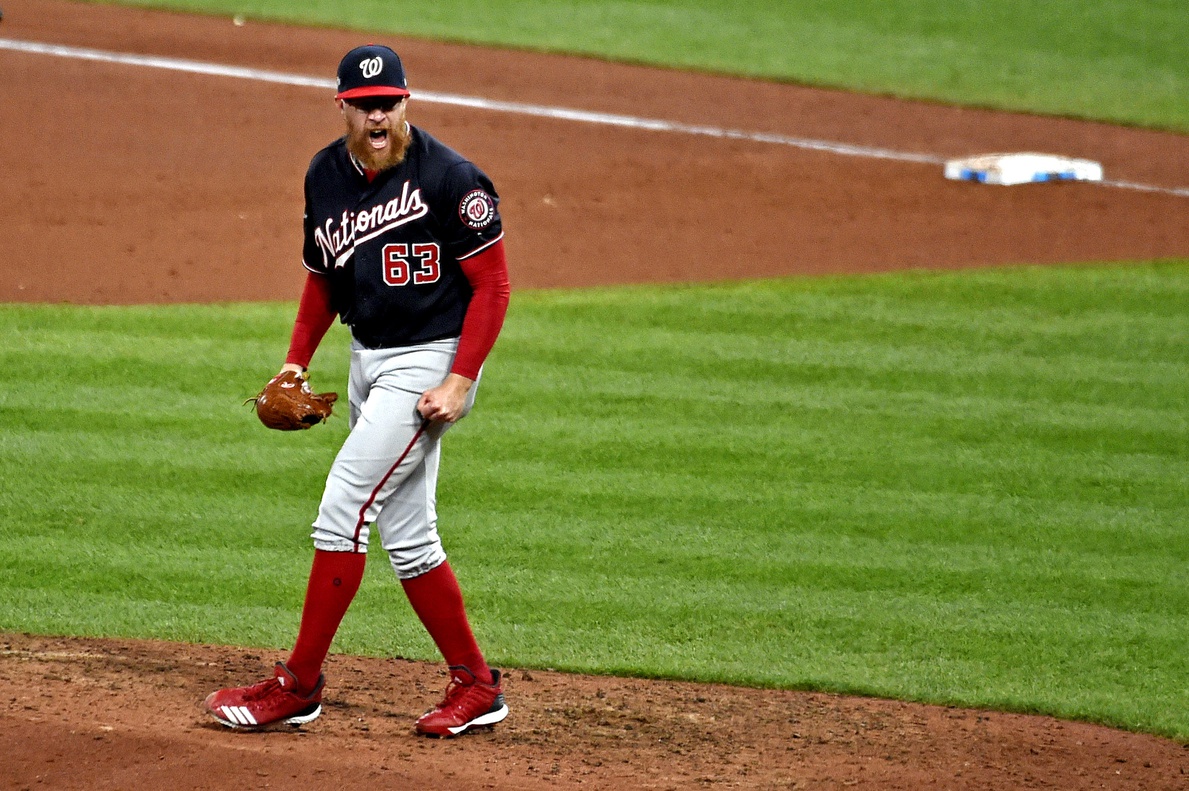
Sean Doolittle
Admittedly, Doolittle is more of a bounce-back candidate, but it’s hard to not want to gamble on a guy who was recently considered one of the best relievers in the game. Doolittle has been plagued with a series of injuries over the last two seasons. Missing some time in 2019 with right knee tendinitis, as well as time in 2020 with what was called right knee fatigue, and eventually missing the remainder of 2020 with a right oblique strain, Doolittle is in a position to prove to the world that he still has it.
The 2019 season seemed to be the beginning of this decline for Doolittle, as his 4.05/4.25 ERA/FIP were both the highest marks of his career. His 25.4 strikeout percentage was also his lowest career mark.
Before hitting the injured list in August of 2019, Doolittle had a 3.00/3.12 ERA/FIP and a 22.2 K-BB%. The month of August set his year downhill as a 12.86/11.93 ERA/FIP, and a .545 wOBA tainted his season numbers, even as he returned in September with a 2.25/3.84 ERA/FIP, and a 1.74 wOBA.
The 2020 season was marred in different ways. After five appearances, Doolittle had a 15.00 ERA paired with a .623 wOBA. He had given up three home runs in just three innings of work, and had a 0 K-BB%, as he had just two walks and two strikeouts. After returning in late August from his knee injury, Doolittle pitched four and two-third innings of scoreless baseball. That was paired with a .118 wOBA. While only striking out 22.2% of all hitters during that period isn’t completely in line with his career numbers, it was a notable difference from his prior output in 2020.
This is Doolittle’s first round at free agency, and it’s likely not how he would have hoped to reach it. Having earned $6.5 million in 2020, Doolittle will likely earn less than that in 2021. There is a strong possibility that Doolittle may take a one-year deal to prove his worth, and try to make more in free agency in 2021.
As far as “lightning-in-a-bottle” candidates go, Doolittle is a more stable bet, granted that he is able to stay healthy. Doolittle would certainly be a high-risk candidate, as he’s now seen time on the injured list in each of his last seven seasons. Nevertheless, he is also still a high-reward candidate, as when he is healthy, he delivers. Whether or not the Mets take on this sort of risk is to be seen, especially with what other candidates are present. To be clear, the risk is not in monetary value, but rather, secondary options if Doolittle spends significant time on the IL.
While the left-handed reliever market is more shallow than the right-handed market, there are some viable options. The market does include other reliable arms like Tony Watson, Jose Alvarez, Andrew Chafin, and Mets favorite, Oliver Perez (leave all hate mail in the comments below). These are just the three guys under the Brad Hand tier that I believe have the highest 2021 ceilings of production. What the Mets’ front office goes with will be exciting to see, especially with the new rumors that the Mets are also interested in top free agent reliever Liam Hendriks. In one way or another, nothing seems off-limits this off-season.



